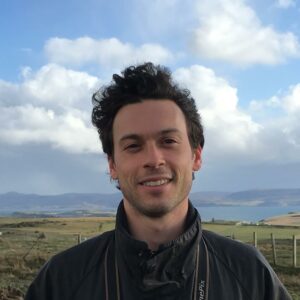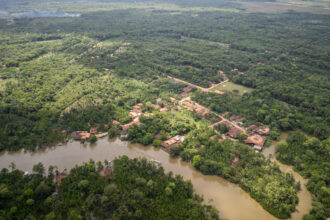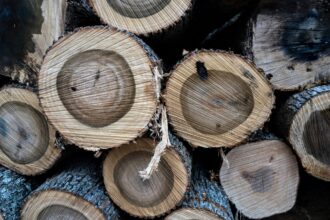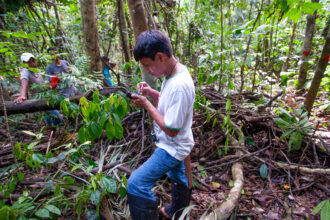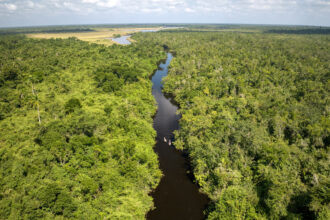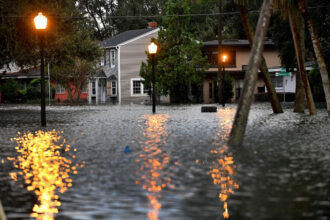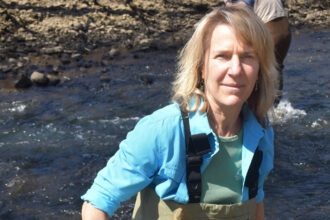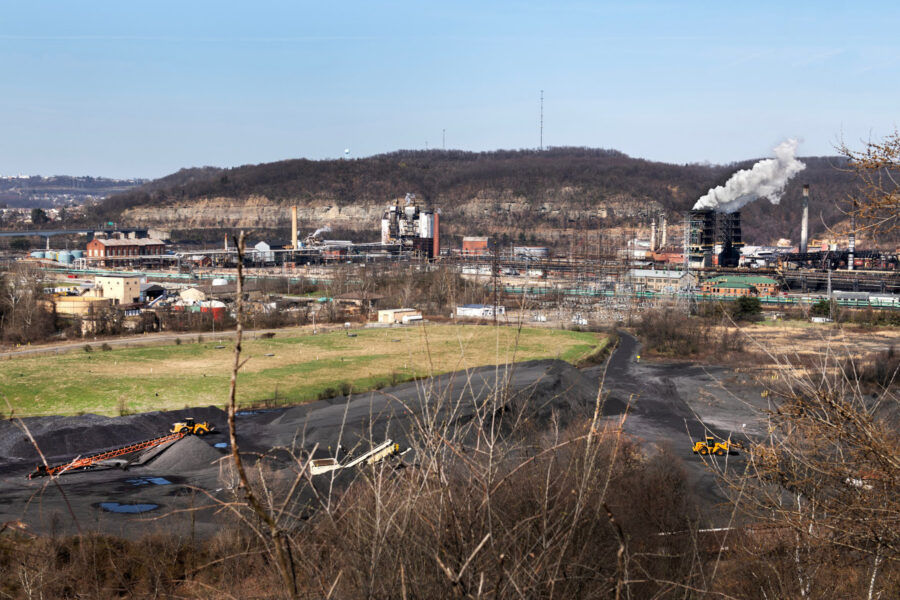GALLON JUG, Belize — Deep in a jungle in northern Belize, Elma Kay stood at the base of a rare, ancient mahogany tree, perhaps the only one for miles around. On the trunk above her head were healed gashes where loggers had erected a platform decades ago in an aborted attempt to fell the giant hardwood, prized for its richly hued lumber.
The Big Tree, as Kay calls it, is a relic. Centuries of extraction removed nearly all the old-growth mahoganies from northern Belize, first under British colonial rule and then commercial logging.
“This is a testament that this forest can support trees like this,” said Kay, a leading Belizean conservationist, her hand resting on the tree’s trunk, more than eight feet across. She was wearing a white, long-sleeved utility shirt to deter biting insects, despite richly humid heat, and carried binoculars around her neck.
Kay spent her childhood outdoors, looking for snake eggs and swimming in the lagoon next to her village. But it was a week spent in the jungle only about 20 miles from the Big Tree, in what was then a newly-created forest reserve, that hooked her on conservation. Kay was 16 when she won a scholarship to join a trip organized by a group called Save the Rainforest, which brought teachers from North America to the jungle. It was the first time she realized that conservation biology could be a career. Almost 30 years later her work brought her back to the same jungle.
In 2021, the forest surrounding the Big Tree was for sale and the most likely buyers were Mennonite farmers prepared to clear the jungle. The owner, an American logging firm, had extracted only select trees while leaving the rest of the forest largely intact. It had already sold smaller parcels, and those had been quickly cleared for row crops or pasture. If this much larger patch were cleared, too, it would eliminate a crucial connection between Belize’s jungle and the rest of the Selva Maya, which stretches into Guatemala and Mexico and forms the largest tropical forest in the western hemisphere outside the Amazon.

Faced with this threat, Kay helped mobilize a coalition of conservationists and private interests in Belize and the United States, including The Nature Conservancy, that was able to pull together $76 million to buy the land instead. She now serves as managing director of the Belize Maya Forest Trust, a nonprofit that was established to manage the new privately-held, 236,000-acre reserve.
Tropical forests are threatened across the globe despite their critical importance to the planet’s health. They are stores of biodiversity and hold vast quantities of carbon in their trees and soils, helping buffer a warming climate. In recent decades, Central America has had the highest deforestation rate of any region, losing about 20 percent of its forests from 1990 to 2020, according to the United Nations’ Food and Agriculture Organization.
Belize has managed to keep a relatively large portion of its land covered in forests, thanks partly to its sparse population, fewer than 450,000 people across an area about the size of New Jersey. But deforestation in Belize outpaced Central America as a whole from 2010 to 2020, according to the FAO. In 2021, the most recent year for which data is available, forests covered less than 56 percent of the country, down from 70 percent in 1990.

Now, Kay and others are leading a fevered push to turn that around. After securing the Belize Maya Forest, they’ve turned their attention to a strip of forest to the south that is all that connects the country’s southern jungles to the larger ecosystem. If too much of it is cleared for agriculture, environmentalists fear, the Selva Maya would be cleaved in two, breaking apart wildlife populations and speeding the forest’s decline.
In a desperate search for financing, the conservationists have turned to carbon credits, a practice that has drawn increased scrutiny and criticism for failing to provide real emissions reductions and for allowing corporations to continue to pollute. Kay said she and her partners have had little choice but to seek funding where they can. With each passing year, more forests have been converted to farms. Her mission now, she says, is to save what’s left before it’s too late.

An Explosion of Life
My first night in the jungle I was awoken before dawn by the sound of howler monkeys, which produce a resonating call like some foreboding mashup of a dog’s bark and a lion’s roar. Between their calls was what sounded like the gentle patter of raindrops, but as day replaced dark it became clear it was only the humidity of the jungle, condensing on leaves and dripping off.
Biologically speaking, the planet’s vital signs are all trending down. The decline can be explained to a large degree by one phenomenon: humanity’s relentless replacement, parcel-by-parcel, of natural ecosystems with cultivated and constructed landscapes. That conversion very nearly took place here, avoided only with an unlikely, last-minute infusion of cash.
As I would discover over almost two weeks of travel across Belize, however, this type of private conservation faces a number of critics and barriers, including the Mennonite farmers who live just outside the Belize Maya Forest’s boundaries and are some of the country’s most prolific agricultural producers. Farther south, separate conservation efforts have clashed with Indigenous communities, who were awarded communal land rights in a 2015 court decision that has yet to be implemented. Everywhere, conservation seems to happen only when money can miraculously be mustered from outside the country.

The forces aligned in the Belize Maya Forest, however, a patch of jungle that is home to hundreds of species of trees and birds and 79 mammals, including jaguars, pumas and three other cats. The riotous explosion of life it hosts has spurred a dizzying array of natural defenses and adaptations.
The pokenoboy palm is equipped with needle-like spines along its trunk, barbed like a sea urchin, to guard against attackers, whereas the black poisonwood tree wards off threats with sap that induces a painful, blistering rash. The effects can last weeks, but can also be soothed by a salve made from boiling the bark of the gumbo-limbo tree, which grows nearby. The give-and-take tree combines ailment and cure in one: While its trunk is lined with poisonous thorns, its sap provides an antidote.
Life has packed itself into every niche, with bromeliads and orchids sprouting from crooks and nooks up into the canopy. Better them than the strangler fig, the seed of which alights high in a tree from where it sends a trunk downward, slowly enveloping its host. One of the most wondrous adaptations can be found in the bullhorn acacia, whose namesake thorns are inhabited by a species of ant that pays room and board by attacking other insects that try to feed on the acacia’s leaves. The ants also clear the ground around its trunk of other plants, weeding out competitors.
It was the forests that drew the British to Belize in the 17th century, when buccaneers began extracting logwood for dye and later mahogany for lumber. Centuries earlier, portions of the forests had been cleared by the ancient Mayan cities, which at one point held a population of millions spread across parts of what is now Belize, northern Guatemala and southern Mexico.

The Mayans abandoned the area centuries before Europeans arrived, and the jungle has long since reclaimed their cities. The Belize Maya Forest is littered with un-excavated mounds that rise out of the forest incongruously, covered in trees and vines.
The property was logged consistently up until its purchase in 2021. The prior regime limited extraction and kept the forest intact. The area’s biodiversity is a testament to the forest’s resilience. But unlike logging, which depends on the forest’s continual existence, the threat it faces today from agriculture seeks to clear it away entirely.
A Vanishing Corridor
Driving Belize’s coastal highway, it is easy to forget the richness of the jungle only miles away. Here, along the two-lane roadway, savannah scrublands are broken apart by wide, mono-cropped fields flat as the American Midwest.
This is the leading edge of agricultural development that has spread across central Belize and is on the verge of splitting apart the forests of the south with the Belize Maya Forest and the rest of the Selva Maya in Guatemala and Mexico. All that remains is a 2.5 mile-wide strip of forests and savannah that Kay and other conservationists call the Maya Forest Corridor and are working desperately to protect.
“We do know that animals are crossing, and this is the only last remaining functional corridor,” said Kay, now driving her pickup past yellow jaguar-crossing signs that lined the road.
After studying science in high school and junior college, Kay won a scholarship to attend Saint Louis University. She went on to earn her doctorate in biology there, but she soon returned to Belize. Kay wanted to help the country develop, she said—Belize did not gain Independence from Great Britain until 1981—and she took a job teaching at the newly-created University of Belize, where she soon helped co-found the country’s first environmental research institute. The institute focused on helping government officials make evidence-based decisions, and some of its work was focused on the corridor area, including a partnership studying jaguar populations.
As their research progressed, however, forests were being cleared for sugar cane or other crops. “There was a real moment,” she recalled recently, speaking by phone, “when you just recognized, ‘Everyone says this is important but what are we going to do? How much more science do we need?’”
In 2021 Kay left the institute after 11 years to focus on conservation full time. And soon after the Belize Maya Forest deal came to a close, another opportunity opened here along the coastal highway, where a 6,000-acre parcel of forest, fields and orchards went up for sale two years ago. A handful of nearby properties had already been protected, and Kay and other conservation groups mounted an effort to buy this land, too.
The conservationists failed to find the money to buy it fast enough, however, and the parcel was purchased instead by the same Mennonite community that sought to buy the land that became the Belize Maya Forest to the north.
Today, much of the area has already been cleared, though the government recently ordered a halt to the work pending an environmental impact statement. Kay hopes that process might require portions of the land to be preserved, but the farmers who bought it would like to harvest as much as possible.
“It’s not our responsibility to pay market rate for land and then not develop the land,” said Harry Letkeman, chairman of the Spanish Lookout Mennonite community. “Why buy it in the first place?”
Letkeman said there is enough land in Belize unsuitable for farming, because the soils are too soggy or the hills too steep, to allow sufficient forests to be conserved there. The protection of the Belize Maya Forest was a bad deal for the country, he said, noting that the trust that owns it negotiated a reduced property tax rate.
“It’s some of the prime agricultural land in this country,” Letkeman said. Now, rather than generating revenue from logging or farming, he said, it’s set aside for protection. “To me it’s just a bad arrangement.”
Spanish Lookout and other Mennonite communities are critical to Belize’s food supply and also grow commodity crops for export. Originally from central Europe, Mennonites have settled in countries throughout the Americas and often focus on farming. Letkeman said his community would continue looking for new land to farm as long as there is demand. “If a piece of property comes available,” he said, “we will develop it.”
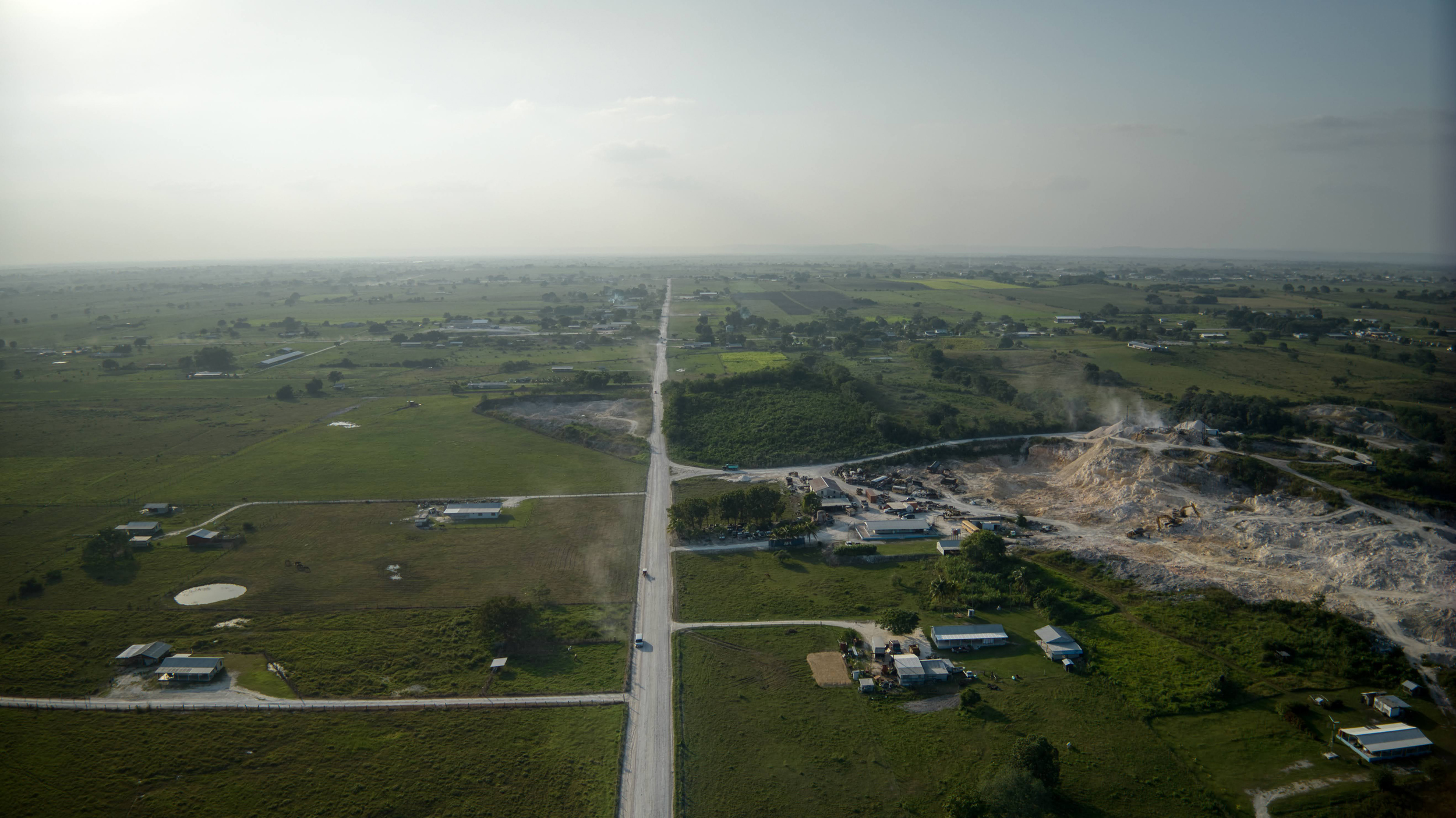
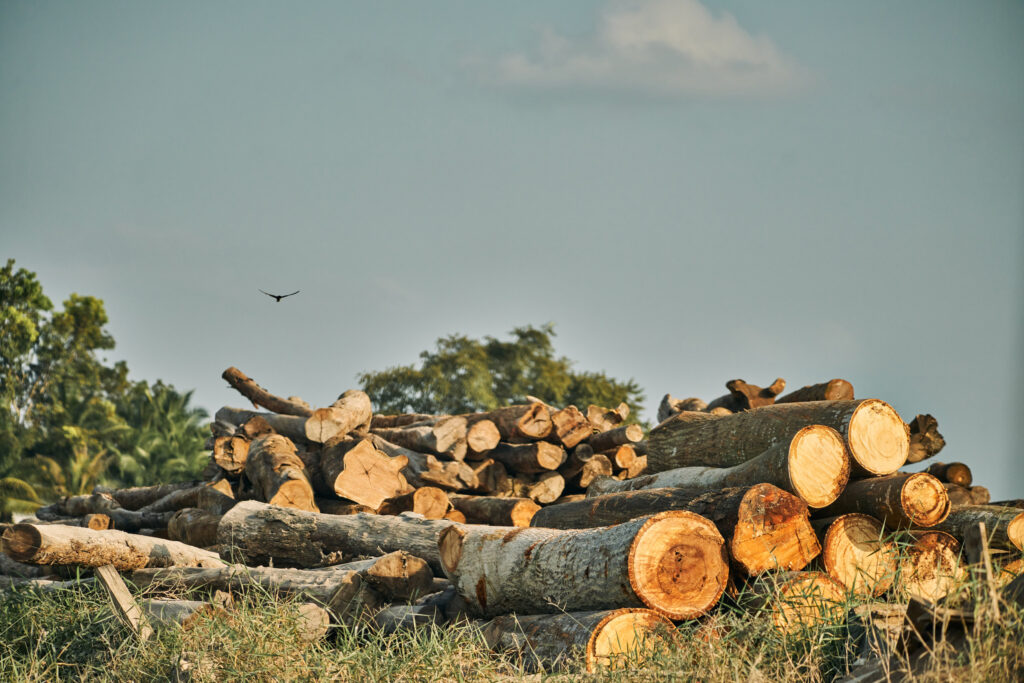
The Mennonites’ clearing removed a significant chunk from the remaining forest corridor, with profound implications for wildlife. In 2016, researchers at Virginia Tech and the University of Idaho published data indicating that jaguar populations in northern and southern Belize were genetically distinct. The findings indicated that the populations were growing isolated from each other, likely because of the development cleaving the country in two. The fear is that, if the corridor narrows further, the jaguars of southern Belize would be forced to inbreed and develop congenital disorders, leading to a death spiral similar to one that nearly wiped out the Florida panther before scientists and government officials intervened.
Some species are already in trouble. White-lipped peccaries, piglike mammals that are critical to forest health, have lost 87 percent of their range across Mesoamerica. The endangered Baird’s tapir is threatened by habitat fragmentation in Belize, according to the International Union for Conservation of Nature. Populations of hundreds of animal species across Belize are decreasing, including each of the five cats—jaguars, pumas, ocelots, margays and jaguarundis—and both species of monkey. Geoffroy’s spider monkey and the Yucatán black howler monkey are both endangered.
For Kay, the sale was a devastating blow.
“It’s hard, because this was an ideal connecting piece, and so yeah, it was very disappointing,” she said, driving past the flat, cleared lands that had been forest only a couple of years before. “This will continue in every piece that is arable. This is what they’re going to do.”
Kay pointed out karst hills on the far side of the fields, jutting up like forested towers from the cleared flatlands below. The coalition of conservationists that had sought to buy the land have since explored purchasing the hills and other undeveloped portions back from Spanish Lookout, but Kay said they don’t have enough money. If the Mennonites don’t sell the hills to conservationists, Letkeman said, “we will utilize them for whatever opportunities present themselves,” which could include mining for limestone.
Nearing the hills, Kay pulled the truck to the side of the road and climbed out. The sun was beating down as she approached a flooded underpass that was built recently to help jaguars, tapirs and other large mammals safely cross the road, which until last year was not fully paved. She leaned over the edge to inspect it: The water was too deep for the passage to serve its purpose. But off to the side, in the drainage ditch parallel to the road, paw prints were impressed into the dirt—a cat searching, perhaps, for a place to cross.
Banking on Carbon
Across all the largest private conservation efforts in Belize, there is one constant that has enabled their success: each has generated a significant portion of the money required by selling carbon credits. For the Belize Maya Forest it was a single buyer that pledged to purchase 10 million carbon credits, once the project has its carbon accounting verified. Kay and the trust declined to disclose who the buyer is, other than to say it is not an oil company. That sale of carbon rights is expected to generate about $60 million, with $15 million going toward an endowment to fund operations and the rest paying off a loan from The Nature Conservancy, which facilitated the land purchase.
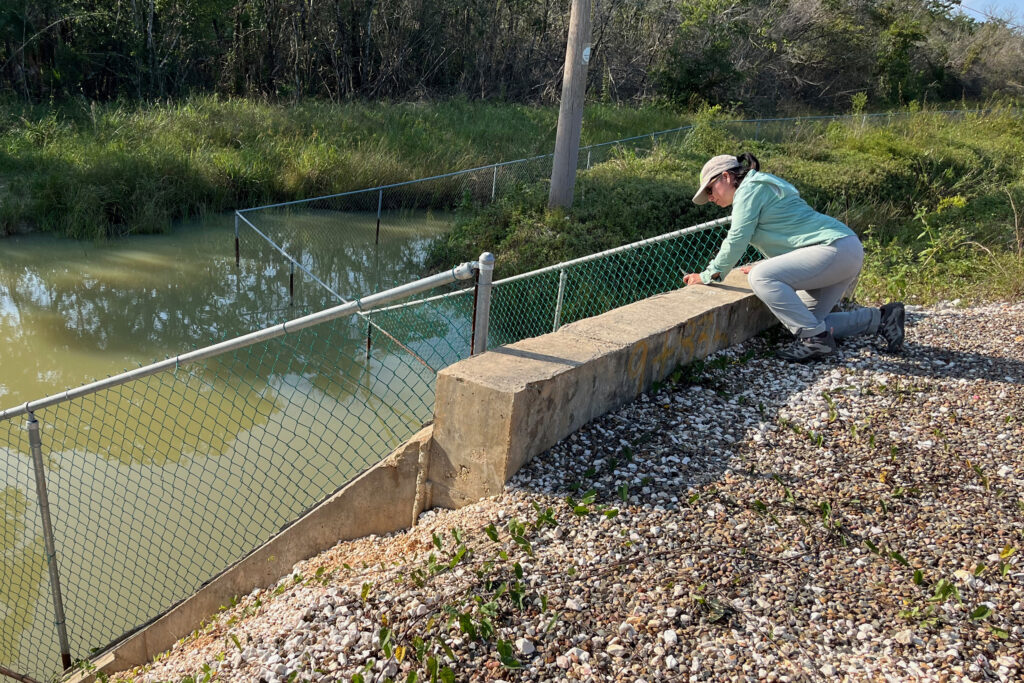
This reliance on carbon credits thrusts the Belize Maya Forest into an international debate about whether these types of projects can generate real climate benefits or whether they merely let polluters off the hook.
The theory behind offsets is that the polluters purchase credits for preserving forests that retain as much carbon as their industrial operations emit. But forest-based carbon offsets have been tarnished by a wave of controversies in recent years. Academic research and journalistic exposés have found that the vast majority of projects do not deliver the carbon savings they promise. A recent analysis by the Berkeley Carbon Trading Project, at the University of California, Berkeley, found that the methodologies used to quantify carbon credits in avoided deforestation projects are packed with incentives that create a “race to the bottom.” Every methodology examined in the analysis resulted in exaggerated carbon savings.
Ostensibly, projects like the Belize Maya Forest work by preventing deforestation that would have occurred otherwise. But quantifying that claim relies on a number of assumptions. Some are easier to test—it seems clear that conservation groups could not have bought the land without the promise of carbon offsets, and it’s also true that agricultural interests were seeking to buy it instead and would have cleared what they could. But other assumptions are harder to verify.
The project assumes that nearly all the land, except certain un-farmable portions along stream banks and elsewhere, would have been cleared. It also relies on complex methods to determine “leakage”—or how much deforestation might occur elsewhere as a result of this land being protected—and other factors. Each of these calculations involves numerous inputs and lots of flexibility, said Barbara Haya, director of the Berkeley project, “and we found over-crediting under every rock we turned.”
Haya stressed that she did not know the details of the Belize Maya Forest project, and that carbon credits can help good projects succeed, but added that “the market is drawn towards exaggerated projects with easy carbon.”
In written answers to questions, The Nature Conservancy said it believed scrutiny of carbon projects is warranted and helps develop better markets. But it said the Berkeley project’s review did not examine the methodology used for the Belize Maya Forest, called “known avoided planned deforestation.” The Belize project, it said, was distinguished for having a single large property with one owner and a “clear and imminent threat of legal deforestation.”
Other conservation projects across Belize have relied on carbon offsets, including the neighboring Rio Bravo Conservation Area, the site Kay visited as a teenager in the 1990s. Those credits have been sold to Delta Airlines, Delta customers and supporters of The Nature Conservancy, which facilitated that deal, too.
“I know everyone says, ‘Oh there’s philanthropy out there, just talk to Jeff Bezos.’ But it doesn’t really work like that, so these mechanisms are important.”
The Belizean government, which will receive a cut from the Belize Maya Forest carbon credit sale, has been trying to implement a national market to sell carbon internationally. For now, though, the projects are largely unregulated.
Officials with Belize’s Forestry Department did not respond to repeated requests for comment for this article.
Whatever its climate benefits may be, Kay said, the Belize Maya Forest would not have been protected without the promise of offsets.
“We didn’t really have the financing to be able to do it” without carbon credits, she said. “I know everyone says, ‘Oh there’s philanthropy out there, just talk to Jeff Bezos.’ But it doesn’t really work like that, so these mechanisms are important.”
A Clash With Indigenous Land Rights
Just two hours south of the farms and forests of central Belize, the Toledo district feels like a different land. The jungles are lusher—southern Belize receives about 80 percent more rain than the north—and the Maya Mountains rise abruptly from the coastal plain. The district is also home to most of Belize’s Indigenous population of Q’eqchi and Mopan Maya.
I met Manuel Choc in the village of Indian Creek, which straddles the country’s Southern Highway. Choc and other residents have long used the lands outside the village to grow corn, beans, bananas and other crops, to hunt game and to gather wood and palm fronds to build their homes.
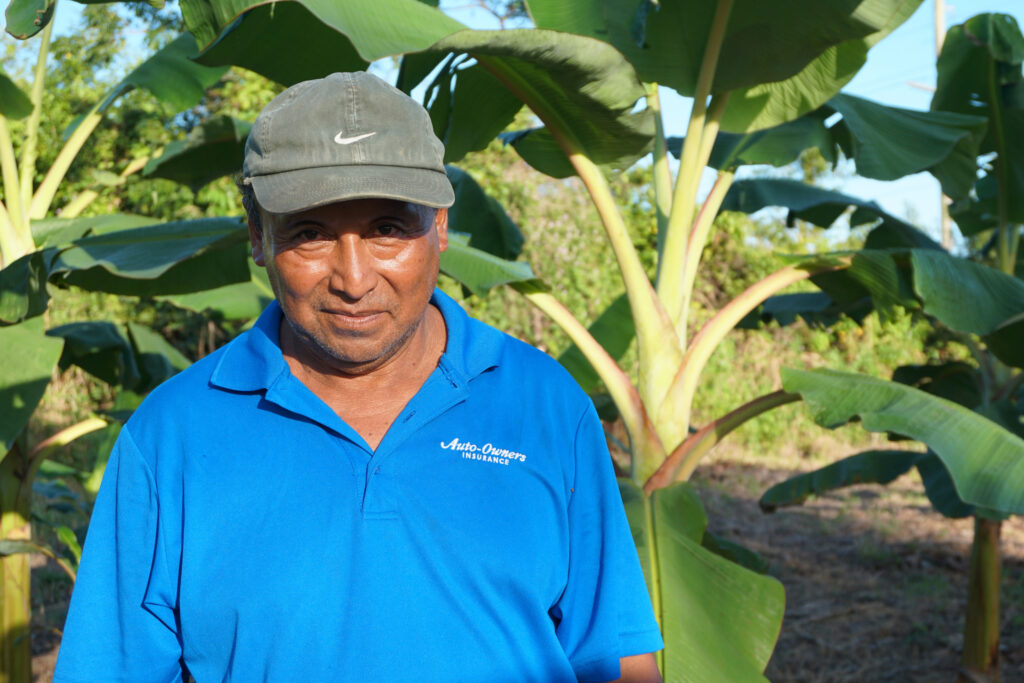
The land has had various owners over the years, some of whom permitted access, others who clashed with villagers, Choc and other residents said. But in 2015, the Mayan communities of southern Belize won a monumental ruling in the nation’s highest court granting them customary land rights in areas surrounding their villages.
Implementation of the ruling required a plan from the government, however, and there was still no plan in place in 2021 when a British conservation group called Fauna and Flora International purchased nearly 13,000 acres of mostly intact forest next to Indian Creek on which Choc and others had been farming and hunting. The organization had previously helped launch a local conservation group, Ya’Axché Conservation Trust, which manages a combination of private and public protected lands and to which Fauna and Flora later transferred the land next to Indian Creek, which it called the Boden Creek Ecological Preserve.
Ya’Axché’s mission is to protect the jungle while also helping communities develop forest-friendly economic pursuits, like beekeeping and agroforestry. It also allows locals to gather wood and palm fronds on portions of the protected lands it manages. In Indian Creek, however, rangers began restricting access to the newly-purchased lands, piling boulders to block roads, Choc and others said. In at least one incident, rangers broke sticks that a villager had gathered for construction on the contested lands, villagers said.
Choc brought me to the house of Faustina Shol, 56, who was sitting on a section of log fashioned as a stool in her kitchen, a wood-slatted structure with dirt floors and a thatched roof. Pots and pans lined the walls and the air smelled of smoldering wood.
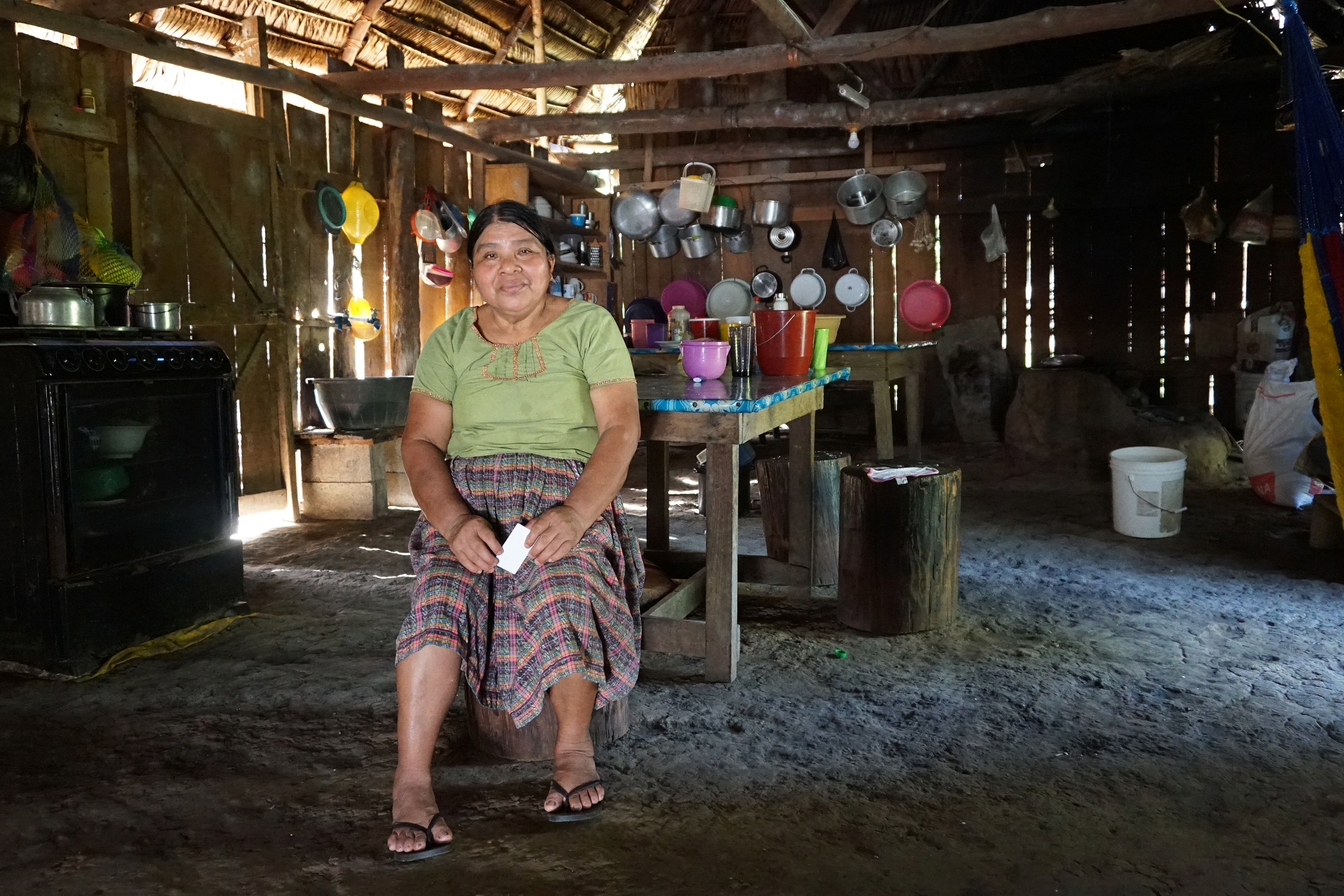
Shol said her family came to Belize from Guatemala before she was born, as part of a wave of migrants that fled that country during its civil war, and moved to Indian Creek when she was 3 years old. Her grandmother had told her they were forced to leave Guatemala because their land had been taken, and she warned that the same would happen one day in Belize, too.
“Now we are seeing it,” Shol said, as a pair of chickens wandered the room. Shol’s grandmother, she said, had told them “we have to get on the land, our own land.”
Gustavo Requena, community outreach and livelihoods director for Ya’Axché, acknowledged previous missteps by Fauna and Flora but said his organization has sought to repair the relationship with Indian Creek since it took over management of Boden Creek last year. He said Ya’Axché was currently talking with members of the community to work out a system of access for sustainable use of the land and had already granted access in 15 cases, a claim that Choc and Shol dismissed.
Fauna and Flora said in an emailed statement that agricultural interests were seeking to buy the land and that “we therefore acted swiftly to secure this ecologically valuable land for the benefits of conservation, local communities and as a national asset for Belize as a whole.”
This wasn’t the first time conservationists clashed with Indigenous groups in Belize. In 1986, Cockscomb Basin Wildlife Sanctuary was created by the government at the urging of an American scientist who had studied the area’s jaguars. In creating the sanctuary, the government expelled a group of families who had been living and hunting in the area and working at a sawmill. The families were relocated to Maya Center, a village that sits at the foot of the road leading to Cockscomb Basin, a few miles away.
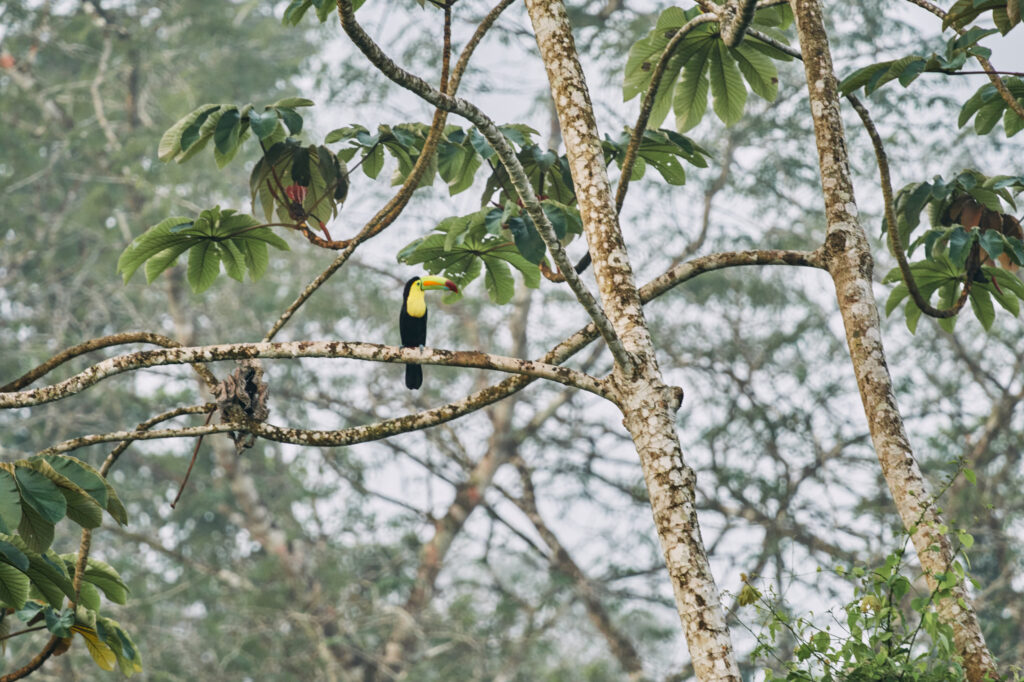
While it is government-owned, the sanctuary is managed by the Belize Audubon Society, a local group that is now independent of its American namesake. The society has worked out agreements with residents of Maya Center over the years to try to help them benefit from the sanctuary—a women’s center sells tickets to the sanctuary and retains a portion of the proceeds, for example—but the relationship has been strained, said Julio Saqui, who runs a chocolate shop in the village and whose father helped found Maya Center in the 1970s.
In the north of the country, Indigenous people have generally either already been assimilated into Belize’s broader mix of creole and mestizo cultures or been evicted from lands decades earlier by the British. In the Belize Maya Forest area, one community was evicted by British loggers in 1936. Kay has been speaking with descendants of some of those villagers who have long been settled farther north, she said, some of whom have expressed interest in visiting the site of their former settlement.
In Indian Creek, the 2015 court ruling granting land rights to villagers raised the question of how the land could have been sold in the first place. Nine years after the decision, the government has yet to finalize a plan to implement the ruling, with Mayan leaders and government officials clashing over the details.
After visiting Shol, Choc wanted to show me his farm so we got into his small, beat-up pickup, with a plastic cord where the door handle used to be. Choc turned off the highway and onto a dirt road, into the area that Ya’Axché calls Boden Creek.
After a few minutes Choc stopped the truck and walked out into a field, rubber waders covering his shins, where he pointed out banana trees and coco plants, a local name for taro. Farther down the rutted path he led me to a neighboring field, separated by bushy overgrowth, where corn grew head-high and beans lined the ground.
“This is our culture,” he said, gesturing across the field, which was surrounded by scrubby jungle growth. “That’s what the Maya people live for. We have to plant.”
Choc and others reject the notion that Ya’Axché, or anyone else, should be able to grant them access to the lands they have been using all their lives. They say they can protect them themselves, clearing what they need for fields and letting the rest grow as cover for the animals they hunt and the forage they gather.
“They can’t play with me, I grow right here,” Choc said of Ya’Axché. “We know this land is good. We can’t give it up.”
This story is funded by readers like you.
Our nonprofit newsroom provides award-winning climate coverage free of charge and advertising. We rely on donations from readers like you to keep going. Please donate now to support our work.
Donate NowHalting Deforestation by 2030: Is it Really Possible?
Across the tropics, the story is the same: More lands are being cleared to feed a growing global appetite for meat, fodder and other agricultural commodities like palm oil. At the same time, most countries have committed to eliminating deforestation and preserving remaining forests and wildlands. The two forces seem in direct tension, but Kay and other conservationists insist they are not in conflict with farmers.
“The issue here is that we have developed global food systems that are unsustainable,” Kay said. It is intensive agriculture, with its heavy reliance on chemical inputs and its need for clearing land, that is the problem, she said.
Rene Zamora-Cristales, a senior manager of restoration policy at the World Resources Institute, said protecting Central America’s remaining forests depends on developing business models and incentives that encourage private landowners to keep forests standing. Kay agrees that conservationists cannot—and should not—be leading the protection of all forests.
Cristales pointed to models like agroforestry with cacao, coffee and other crops—the type of work Ya’Axché is trying to develop on a small scale—as possible paths forward. But it is unclear whether these models can be scaled up meaningfully.
Henry Canton, who has led some of Belize’s largest agribusiness groups and once served as the country’s minister of works, said agricultural interests are beginning to change their outlook.
“Farmers are ready for conservation, and are willing to give up 15 or 20 percent of what they’re doing towards the effort if handled in the right way,” said Canton, who is now executive director of Silk Grass Farms, which combines regenerative farming with forest preservation.
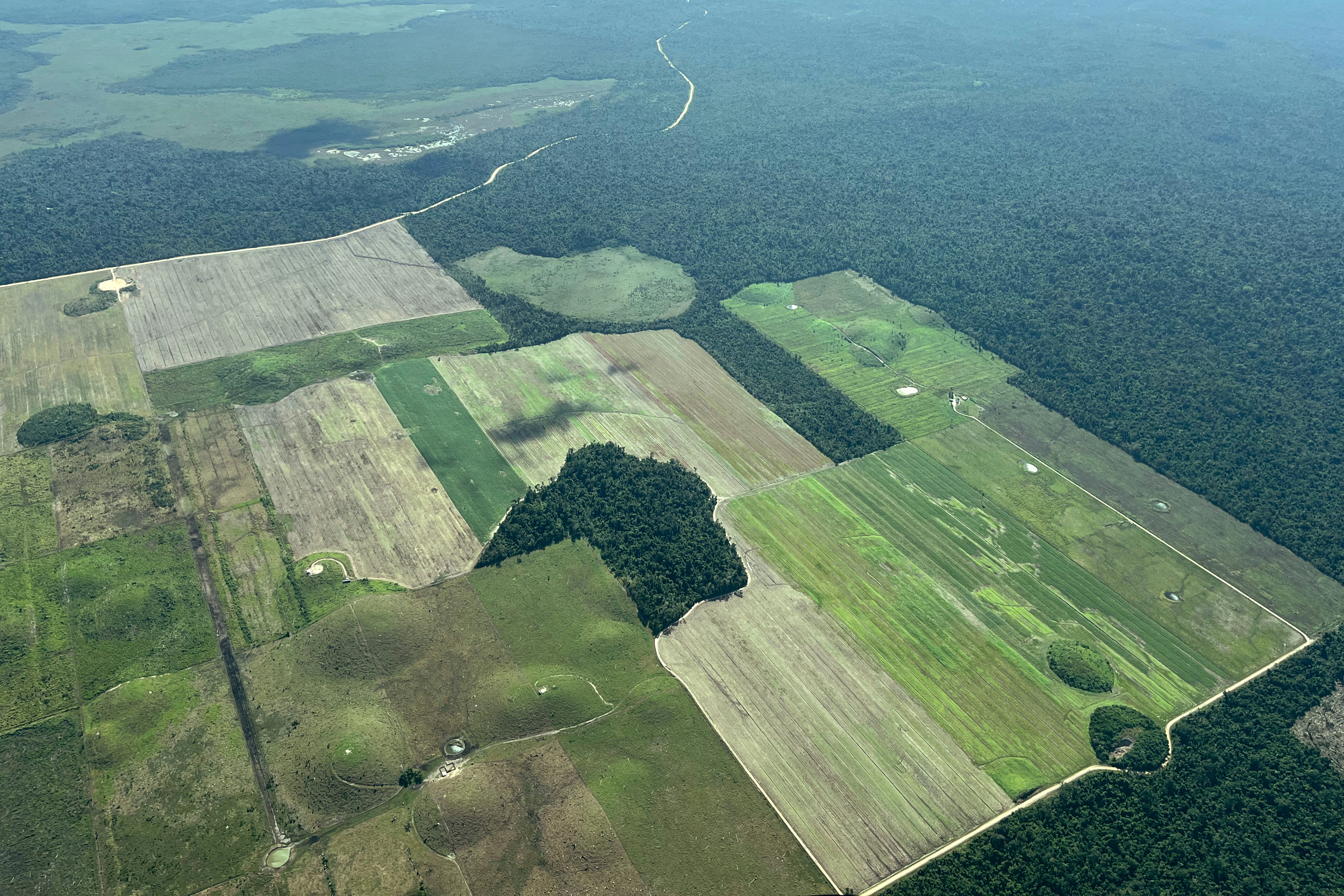
Canton has criticized Kay’s approach as overly antagonistic toward farmers. But he also considers her a friend and tried to help her and other groups in their unsuccessful bid to buy the farmland in the corridor area.
Kay insists that her work “has never been about demonizing farmers,” and points to a regenerative agriculture program that the Belize Maya Forest Trust is undertaking.
Again, however, it’s unclear if Canton’s numbers add up. If farmers tilled most of Belize’s remaining arable land in a more sustainable manner, would that leave enough forest behind?
Emil Cherrington, a Belizean scientist at the University of Alabama in Huntsville who has published satellite-based studies of the country’s forest cover trends and supports SERVIR, a joint program of NASA and the U.S. Agency for International Development, is not as optimistic. He said the country’s government had made great strides increasing its capacity for monitoring forests, but that continued population growth will challenge the goal of halting deforestation by 2030, which Belize endorsed in 2021.
“I kind of wonder how we’re going to get to that,” Cherrington said, adding that while deforestation rates were lower last decade than they had been in the 1990s, they were not falling fast enough.
On my last day in Belize I boarded a plane in the south to return to Belize City. The flight took us over the coastal plain with a view of the Maya Mountains, where many of the country’s protected areas are concentrated. On the flatlands below, sugar cane fields and banana plantations broke up the forests. But up until the last stretch of the flight, as the plane neared central Belize and its concentration of farms and cities, the majority of the land below remained as forest—for now.
Travel for this story was funded by The European Nature Trust.






